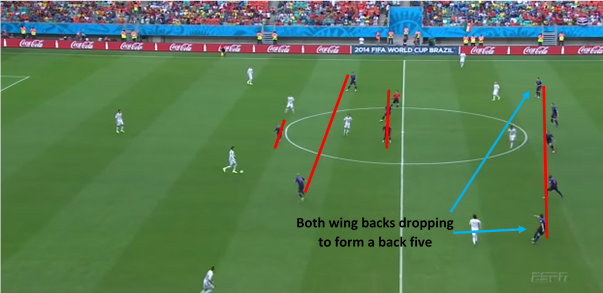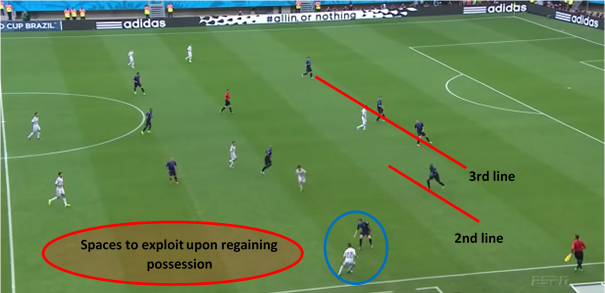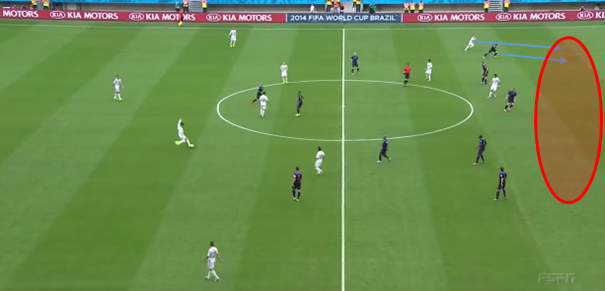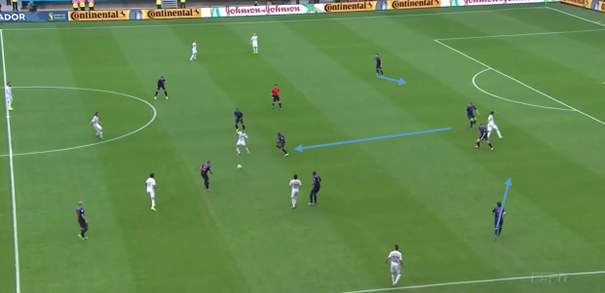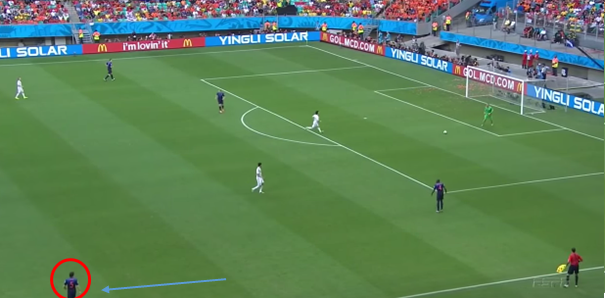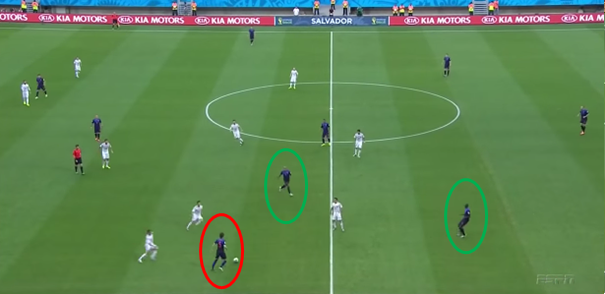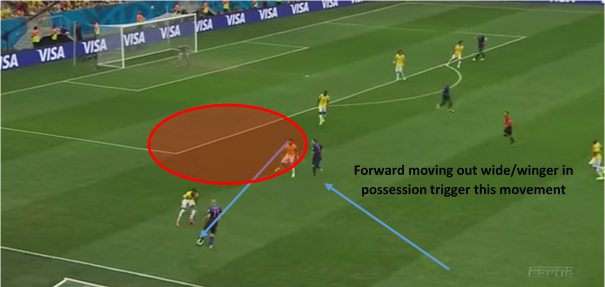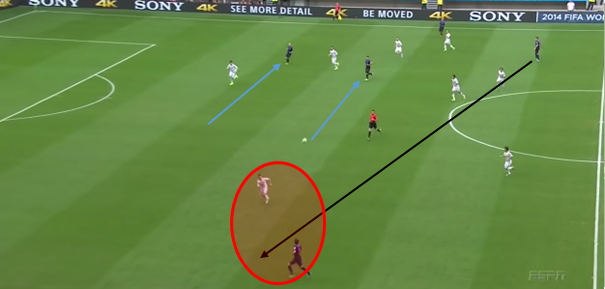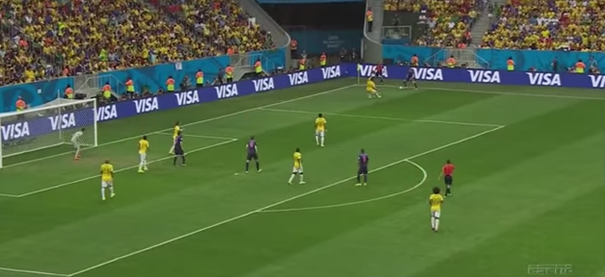By Alex Trukan
The 1-3-5-2 system has gained popularity in the last couple of years and is now employed by many teams around the world. One of the most remarkable examples include Holland national team in the 2014 World Cup. Apart from creating overload in midfield areas, one of the main advantages of 1-3-5-2 formation are wingbacks, who help in forming a block of five players out of possession, as well as support two strikers and midfielders when attacking.
Out of Possession – Basic Shape
When the ball is in the central areas, the wingbacks’ role is to drop back and form a line with the back three. Their main responsibility are opposition’s wingers as well as supporting central defender in case he is following striker dropping deep. The distances between wingbacks and central defender should be the same as between two centre backs. However, wingback is positioned on a slight angle in relation to his nearest centre back (allowing to close down the winger quickly).
Out of Possession – Pressing in Wide Areas
When the ball is played wide to the wide midfielder, wingback is responsible for applying pressure forcing out or in depending on the coach’s tactic. It is crucial for the opposite wingback to tuck in and form a 3rd line with two other centre backs. 2nd line is formed by the centre back nearest to the pressurising wingback. Regaining possession in these areas is very productive as there are usually spaces to exploit in front.
Out of possession – Tracking Runners
In case opposition’s wide midfielder makes a run in behind of defence (especially relevant when applying high pressure as a team). Wingback’s role is to track the runnner. Body position should be sideways to be able to see the ball as well as the attacker.
Out of Possession – Support for Central Defenders
Wingback is also responsible for allowing central defender to track the runs of a striker (going deeper) by supporting him and forming a back 4 line. That will make the overload in midfielder possible without risking gaps in the defensive line.
In possession – Building Up from the Back
When building up from the back, wingbacks are rarely used on the own half. Their main role is to push up up to the opposition’s half and create space for centre backs and central midfielders to receive.
In Possession – Middle Third
As we can see below, the role of the wingbacks in attacking starts usually on the opposition half. It is important that they offer passing options for central midfielders as well as strikers. It is useful for wingback to play in the pocket of space just behind opposition’s strikers.
In Possession - Driving Infield (underlaps)
If one of the strikers moves into wide area, wingbacks might make a forward underlapping run and threaten the space in behind of the defence. That will usually mean a 2v2 situation in wide area.
[wpsharely id="2988"][/wpsharely]In Possession – Creating 1 v 1
Another usage of a wingback might mean creating a 1v1 situation (strikers and midfiedlers staying inside). It is also increasingly popular that wingbacks play direct ball to each other.
In Possession – Crosses into the Penalty Box
Finally, the most traditional role of the wingback is to produce crosses into the penalty box. The role of the second wingback is then to come into the penalty box. It is crucial that defensive midfielders offer defensive support as both wingbacks are positioned high up the field.
By Alex Trukan, Development Coach, Nottingham Forest

